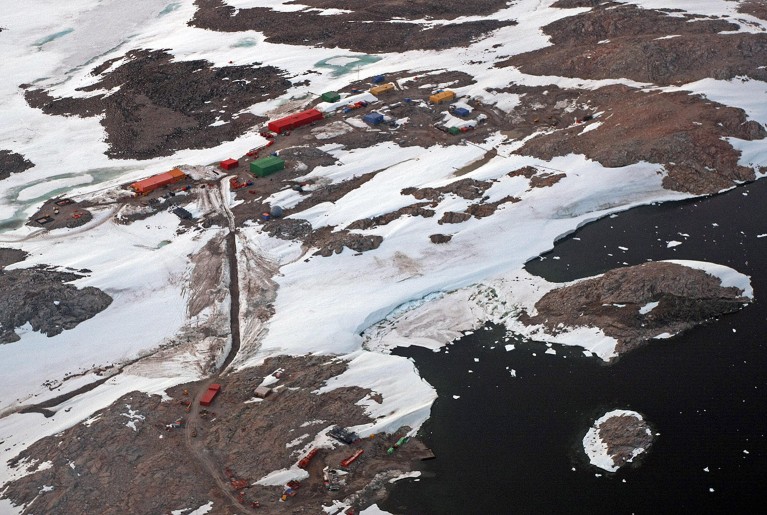Hello Nature readers, would you like to get this Briefing in your inbox free every day? Sign up here.
An unknown species of early human nearly died out around 900,000 years ago, according to genetic analysis. It might have been both the ancestor of Homo heidelbergensis and a species ancestral to our own.Credit: S. Entressangle/E. Daynes/Science Photo Library
Roughly 900,000 years ago, climate changes sweeping the globe might have pushed our distant ancestors to the brink of extinction. The unknown human-like species was reduced to just 1,280 breeding individuals, creating a genetic bottleneck that is still detectable in the DNA of modern-day humans. The population didn’t expand for more than 100,000 years, after which it bloomed again and the progenitors of our species and of our extinct relatives, the Denisovans and the Neanderthals, emerged.
Nature | 3 min read
Antarctica might seem like a pristine wilderness, but many years of research have taken a toll: parts of the sea floor near Australia’s Casey research station are as polluted as the harbour in Rio de Janeiro, Brazil. And other nations are grappling with pollution and waste-management problems at their own research stations. More of the historical pollution will emerge as the climate warms, says Ceisha Poirot, at the Antarctica New Zealand institute. “Things that were once frozen in the soil are now becoming more mobile.”
Nature | 4 min read

The sea floor near Australia’s Casey station in Antarctica has been found to have levels of pollution comparable to those in Rio de Janeiro’s harbour.Credit: Torsten Blackwood/AFP via Getty
Features & opinion
Plant geneticist Melaku Worede, whose work helped Ethiopia to recover from the devastating famine of 1984 and make it a model of crop biodiversity, has died aged 87. The influential approach that Melaku developed, which he referred to as ‘conservation through use’, focuses on maintaining the adaptability and diversity of crops by working hand-in-hand with farmers. “We need diversity for food security because uniformity is not secure,” said Melaku in a 2009 interview in Seedling. “If we all hang on to one string, the string will break. “
Nature | 5 min read
A brief encounter with a living thing reawakens the heart of a warrior in the latest short story for Nature’s Futures series.
Nature | 6 min read
When biophysicist Caroline Giuglaris joined her PhD laboratory, the amount of plastic waste shocked her. But “all those pipette tips were just the tip of the iceberg”, she writes. An analysis of the lab’s full environmental impact, with the help of tools from Labos 1Point5, showed that electricity and air travel were big contributors to its emissions. Her department is now well on its way to making changes, but researchers looking to follow in her footsteps “will probably meet a lot of resistance, refusal or, worse, deadly silence, during this journey”, she suggests. “Celebrate every bit of progress that you make.”
Nature | 4 min read
Physicists have for the first time detected oxygen-28 — an isotope of oxygen that has 12 extra neutrons packed into its nucleus — and initial observations indicate that its behaviour defies expectations. “None of the theory predictions, which are really state-of-the-art predictions, were able to explain — or agree really — with the observed mass or the energy,” nuclear physicist Rituparna Kanungo tells the Nature Podcast. “So, that brings a bigger question … [about] whether our knowledge of nature’s strong interaction is complete.”
Nature Podcast | 27 min listen
Subscribe to the Nature Podcast on Apple Podcasts, Google Podcasts or Spotify, or use the RSS feed.